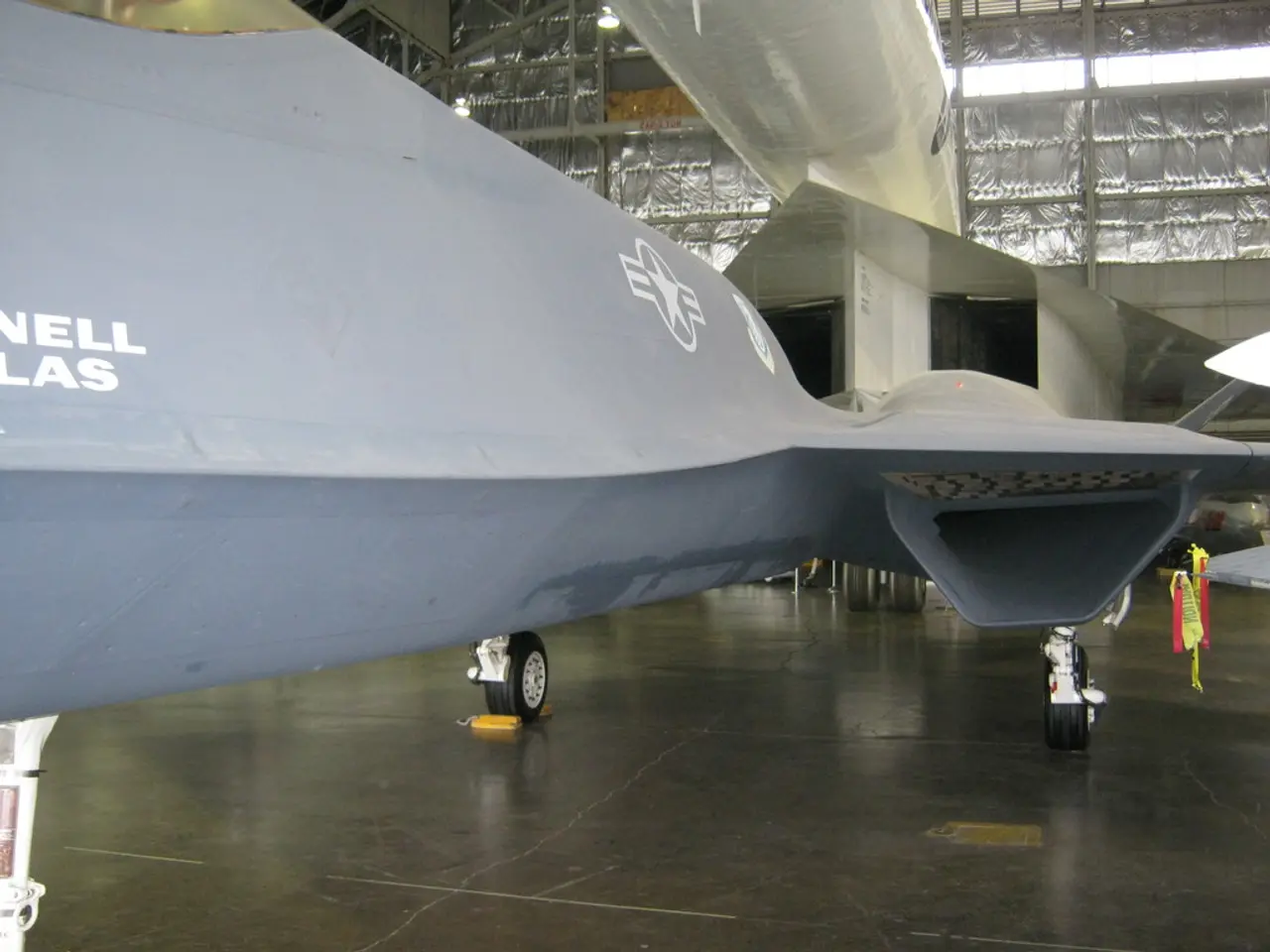Discusses Golden Dome Priorities with Guetlein, Affirms Feasibility of Missile Interceptors
The Golden Dome missile defense project, a comprehensive air and missile defense shield for the U.S. homeland, is making significant strides, with a primary focus on integrating space-based interceptors (SBIs) alongside existing ground-based capabilities for a multi-layer homeland defense.
Key points on the status and progress include:
- Command-and-Control and Integration Efforts: The project's architecture aims for a "layered defense" system combining space-based interceptors, Terminal High Altitude Area Defense (THAAD), sea-based assets, and advanced missile defense radars. The Joint All-Domain Command and Control (JADC2) concept is integral to achieving rapid and seamless integration across domains to manage incoming threats efficiently.
- Space-Based Interceptors Development: The Pentagon, led by Space Force General Michael A. Guetlein, is pushing for accelerated development of SBIs. Though the physics and basic technology for interceptors in space are proven, economic viability, scaling production, and supply chain concerns remain critical challenges. The Department of Defense is exploring novel industry collaboration mechanisms such as prize contests and cooperative development to speed innovation and expansion of the industrial base.
- Funding and Industry Opportunities: The project enjoys robust funding, with nearly $25 billion allocated from the recent "Big Beautiful Bill" appropriations. This investment supports design and construction of missile defense infrastructure, advanced technology integration (including SBIs, directed energy weapons, and hypersonic defense), as well as R&D activities. Contractors with expertise in aerospace, software, cybersecurity, and AI-driven control systems are actively being engaged through requests for proposals (RFPs) and industry outreach efforts such as “reverse industry days” to align capabilities with project needs.
- Timeline and Government Mandate: President Donald Trump has set an ambitious goal for the Golden Dome project to field a capability by the end of his term in January 2029. To meet this deadline, General Guetlein has been tasked with producing a notional blueprint quickly, reflecting the high urgency and government commitment to deploy the layered missile defense shield before major threat thresholds from adversaries like China and Russia are reached.
In the coming days, General Guetlein plans to visit U.S. Northern Command and U.S. Space Command to further discuss the project's progress and challenges. Northrop Grumman has already started ground testing an interceptor for the Golden Dome project, while the Space Force is conducting market research on potential interceptor options.
General Guetlein values "reverse industry days" for solving hard problems, where he presents his problem to industry and listens to their solutions. He intends to focus on connecting existing systems across the armed forces as a first step towards meeting the deadline. Guetlein sees organization as the biggest challenge for the Golden Dome project, requiring coordination among various services, agencies, industry partners, and more.
The department has announced a "minimum viable capability" for JADC2 (Joint All-Domain Command and Control), but the effort is still ongoing. Guetlein plans to have incremental demonstrations of the integrated command and control network every six months. He believes the technology needed for Golden Dome already exists but has not been applied to this problem set or form factor.
Maj. Gen. Stephen Purdy, acting assistant secretary of the Air Force for space acquisition, mentioned that DOD plans to use novel ideas like prize activities and cooperative work with industry to develop interceptors for the Golden Dome project. Guetlein has been granted sweeping powers to address the Golden Dome project, including budget, acquisition, direct hiring, technical, architectural, and liaison authorities. He made his comments at a Space Foundation conference.
The most attention-grabbing aspect of the Golden Dome project is the idea of space-based interceptors (SBIs). Despite the challenges, the project is actively advancing with a focus on integrating space-based interceptors alongside existing ground-based capabilities for a multi-layer homeland defense.
- General Guetlein is pushing for the accelerated development of space-based interceptors (SBIs) as part of the Golden Dome missile defense project, a comprehensive air and missile defense shield for the U.S. homeland.
- The Department of Defense (DoD), under General Guetlein's leadership, is exploring novel industry collaboration mechanisms such as prize contests and cooperative development to speed innovation and expansion of the industrial base for SBIs.
- Northrop Grumman has already started ground testing an interceptor for the Golden Dome project, while the Space Force is conducting market research on potential interceptor options.
- In an effort to meet President Donald Trump's ambitious goal for the Golden Dome project, General Guetlein has been tasked with producing a notional blueprint quickly and focusing on connecting existing systems across the armed forces as a first step.
- Maj. Gen. Stephen Purdy stated that the DoD plans to use novel ideas like prize activities and cooperative work with industry to develop interceptors for the Golden Dome project, with a focus on integrating space-based interceptors alongside existing ground-based capabilities for a multi-layer homeland defense.




